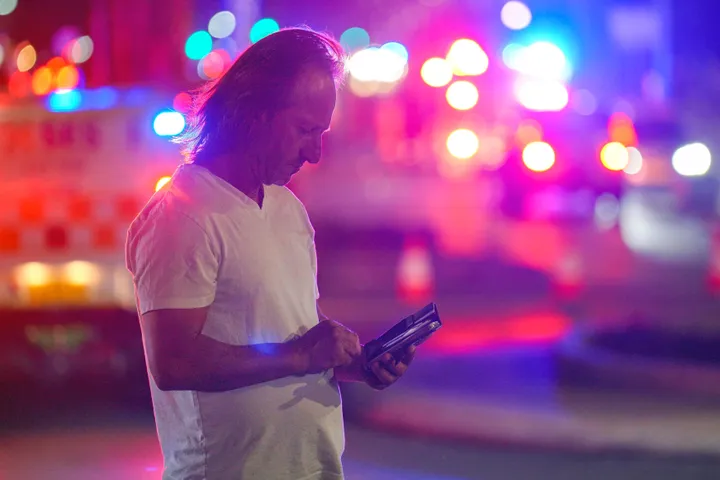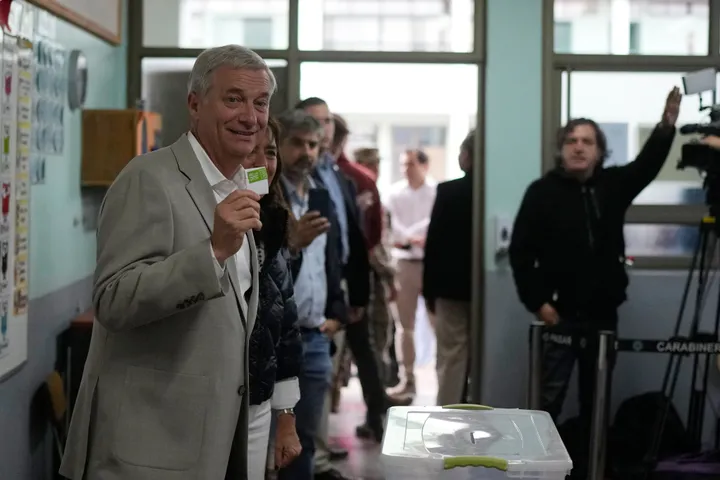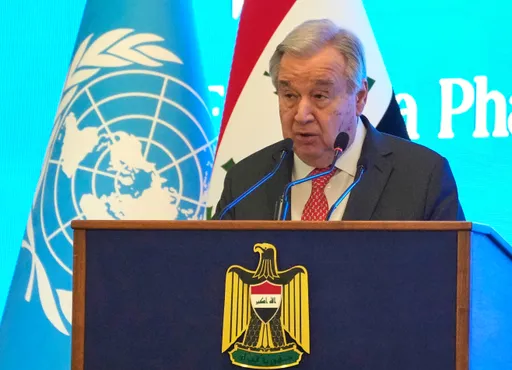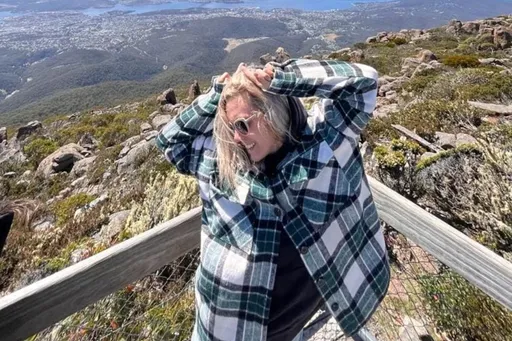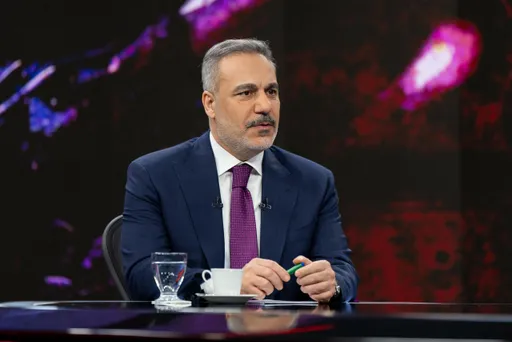ISTANBUL, Turkey — Ahmet Ustunel, 37, grew up in Istanbul near the shores of the Marmara Sea. When he recalls his childhood, the one thing that he talks about most is the time he spent fishing with his father or swimming with his cousins. He has felt the rush, the pull and the power of the waves. And yet he has never actually seen them, and probably never will.
That’s okay, he says. “I lost my eyesight at a very young age. So it hasn't been a big shock for me,” he tells TRT World.
In the early 1980s, when he was just three years old, doctors diagnosed him with retinoblastoma, a debilitating form of eye cancer.
Manoeuvering around people and buildings wasn’t always easy, despite his early affinity with the long white cane. As a boy, he used public buses and, occasionally, missed a stop. The audio announcements common nowadays were still years away. During his time as a student at Bogazci University, he had to always keep a tape recorder and plenty of cassettes on him. He would ask classmates to read chapters from different books — not many are in braille. It would often take a month to read just one book. And yet he persisted.
Life went on, with bumps and bruised knees and a grandmother who perpetually worried about him. During his undergraduate years, he fell in love with an American exchange student, moved to the United States, completed his masters in special education and started teaching blind children.
And still he kept going back to the sea — this time the San Francisco Bay. “My father had his own fishing boat,” he remembers fondly, speaking of his Marmara-infused childhood.
His love of the sea wasn’t without challenges. Blind people can’t take boats out on their own, as they need someone with a working pair of eyes to guide them. This was something Ustunel wanted to overcome.
“I’m very stubborn. If someone says ‘you can’t do this,’ I do completely the opposite,” he says.
Earlier this year he read, using voice software, about the Holman Prize for Blind Ambition, run by LightHouse for the Blind and Visually Impaired, an NGO based in San Francisco. The prize, named after James Holman, a blind British man famous for his travels in the 1800s, aims to encourage blind people to live independently.
Ustunel prize entry proposed he paddle a kayak across the five-kilometre stretch of Istanbul’s celebrated Bosphorus without assistance from anyone — and he’d put together an electronic navigational system that would allow him to do it.
He wouldn’t be the first blind man to kayak, but he is a rarity. Other visually-impaired kayakers, such as Erik Weihenmayer, who kayaked in the Colorado River, are professional athletes, and they have someone giving them instructions via Bluetooth.
Ustunel’s pitch to do his trip solo won him the award in June. He’s currently practising in San Francisco and plans to make the attempt on the Bosphorus next July.
Now the only remaining problem is to build something that’s not only practical, but also affordable.
His quest to devise a system for blind kayakers means he’s following in the footsteps of some extraordinary inventors and developers who have striven to find ways for visually-impaired people to live a normal lives.
A chance lakeside encounter
Around the time that Ustunel was learning to fish and swim, Roger Keeney was working on his farm in Tompkins County, New York. One day in September 1989, while loading corn chop (a type of chicken feed) on a silo elevator, part of the machine blew up.
A splinter hit him on the head, leaving him unconscious. “When I regained consciousness, it was all dark and I couldn’t see a thing,” he tells TRT World.
Keeney had a rare degenerative hereditary eye disease known as retinitis pigmentosa. Though his eyesight had worsened over the years, before the accident he could pretty much do anything, except for driving at night.
It was winter, the roads were blocked, and the nearest neighbour was more than a kilometre away. Having grown up on the farm, he knew how to navigate his way back to the house.
When you lose sight that suddenly, he says, the shock doesn’t come immediately. “The panic part comes after a week. The first night you sleep saying, ‘this is just temporary, it’s gonna go away in the morning.’” But it didn’t.
Forced to survive in total isolation, Keeney slowly came to terms with the handicap. He cooked, washed his clothes and fed the animals. “I basically taught myself to use the cane by using a broomstick.”
Years later, he and his wife, who is also blind, founded Athens Inclusive Recreation and Sports, an outdoor activity club for disabled people that organises sporting events for the blind.
It was during the club’s first picnic in 2012, by the side of a lake, that Keeney came across blind kayakers. They were dependent on someone with normal eyesight to help them navigate.
“So me and some folks said ‘why can't we do this better?’” He approached engineers from the telephone company AT&T to see if they were willing to offer assistance.
The only man who responded to Keeney was AT&T researcher Marty Stone, who eventually designed a device that helps a blind rower to keep their course on the water. It consists of buzzers attached to each shoulder that beep a warning accordingly on any right or left deviation.
Stone, a 30-year information technology veteran, is now working on an upgraded version for Ustunel.
“Ahmet wants a talking compass and a few other features,” Stone told TRT World. His team is building an integrated system the size of a thimble that will have accelerometers to measure acceleration, tilt and vibration; an optical gyroscope to sense movement; a GPS receiver and a voice processor.
It will cost a mere $500.
Capitalism doesn’t see the blind
As technology advances, many hi-tech devices are becoming more widely available and easier to improvise. Prices have also come down.
“It means people like me who are enthusiasts and hobbyists will start making things — things that are not profitable for companies to make,” says Stone.
For big firms, developing and marketing niche products like electronic aids for the blind can be difficult in the absence of a wider market. The demise of Telesensory Corporation is a case in point.
John G Linvill, the famed Stanford University professor and one of the pioneers of transistor circuits, invented Optacon, an electronic book reader, for his blind daughter in the 1960s.
Telesensory, the company that marketed Optacon, was a leader in assistive technology for more than three decades, until it was shut in 2005, after running into financial difficulties.
But not every technology has become cheaper.
For Ustunel, the biggest challenge in developing a guidance system for his kayak is to detect and avoid collision with oncoming boats. The sonars that can be used for the purpose can cost upwards of $35,000 — way beyond his budget.
The grant he has received from LightHouse is $25,000.
The simplest solution to avoiding a collision with another boat that Ustunel sees lies in car parking sensors.
That’s where his story overlaps with that of a near-blind inventor who is partly responsible for self-driven cars.
“Where’s my baby?!”
Tony Hayes was completing his PhD in physics at Cambridge University when he went blind due to a hereditary disease. After eight operations, doctors were able to restore some sight in one eye.
In the 1970s, he went on to work with Nottingham University’s Blind Disability Research Unit after earning another PhD, this time in psychology.
“I wanted to do something for the blind. And lo and behold, I found out that that kind of work is done in the psychology department,” he tells TRT World.
The unit developed the Nottingham Obstacle Detector (NOD), a handheld ultrasonic torch which captures echoes ricocheting off objects near the user to detect objects. It had a musical scale that beeped warning sounds as an object was approached.
“NOD was just a little device which basically said ‘go’ or ‘no go’. It was good at finding gaps [between objects for the user to walk through].”
Heyes modified the NOD into a head-mounted electronic aid that also had artificial intelligence: the Sonic Pathfinder.
“I made something which didn’t have a range of two or three metres, it had a range of three seconds. It would tell you about the things you will contact in the next two or three seconds.”
That technology had an unintended spin-off — what Heyes called the Reverse Aid and what everyone else now knows as the parking sensor — which he designed to avoid bumping his own car into standing objects.
“Nobody else wanted it at the time. No one wanted to drill holes in their car.”
Heyes took his invention to the executives of the British luxury car company Jaguar. “They were very polite. They sat me down and said: ‘Well Dr Heyes, you like it because you have got only one eye and you can’t judge distances. But ‘real people’ won’t like it.'”
The patent for the parking sensor expired in the late 1990s. Since then it has been installed in millions of cars.
“So I didn’t make my millions. Where’s my baby?” he laughs. “I felt very cheated, but I got over it,” he says with a resigned sigh.
But that pales in comparison to the tragedy he faced in 2016.
His youngest son, Ben Heyes, was the the chief information security officer at the Commonwealth Bank of Australia. During an industry conference in Hong Kong he suffered a stroke, which left him paralysed.
“Me and my wife were in England when we got the call,” he says. “The first thing we were asked was this: what were Ben’s wishes for his organs? Because he will probably gonna die, never talk, walk or respond to rehabilitation.”
This is what the doctors initially thought. Instead, his son started to recover. A year on, one side of his body is paralysed, but he can walk with the help of a crutch.
For Heyes, this experience reinforced his belief in the work of a scientist who many thought was a charlatan, but who gave hope to many blind people.
You see with your brain
In 1969, Paul Bach-y-Rita, a neuroscientist, published an article in the magazine Nature challenging the conventional understanding about the brain’s functioning.
He invented a device which consisted of a dentist’s chair, a vibrating back and a camera connected to a computer. What he proposed was revolutionary: that you don’t depend on your eyes to see. The human back, stomach and tongue can do the job, too.
The brain, he suggested, is elastic and so adaptable that any of the five senses could be rewired to replace another. It doesn't “see” the world in quite the straightforward way that our eyes convey it. Rather, it uses the information which can come from other sensory organs to comprehend its environment. All that needs to be done is to communicate that information with the central nervous system.
This was part of his research on the subject of “sensory substitution,” a concept he introduced which says that the senses are interchangeable.
At the time, his articles were rejected by numerous scientific journals. His own mentor, Ragnar Granit, who won the Nobel Prize for his work on the retina, asked him to desist. “Why is Bach-y-Rita wasting time with that adult toy?” Granit would ask.
Neuroscientists believed that a damaged brain stands no chance of recovering; that parts of the brain are compartmentalised to perform certain functions. For instance, the visual information goes directly from the eyes to the visual cortex through a fixed network of nerves, they insisted.
Bach-y-Rita’s crude dentist chair converted images via a computer and a camera into tactile signals which vibrated against a blind person’s back.
With practice, participants could associate the physical sensation with objects around them, says Heyes, who also worked with Bach-y-Rita in the 1970s and witnessed the experiments.
“They would play a trick on blind users. They give the lens a bit of a twist, and suddenly this made the picture big and the person in the chair would jump backwards,” he says. “It was coming in from your back but you were perceiving it being out there in front of you.”
Heyes notes that Bach-y-Rita’s invention was difficult to move around with and that the resolution wasn’t very good.
Other scientists who have used Bach-y-Rita’s techniques to advance technology to help the blind include Peter Meijer, the inventor of vOICe (the middle letters stand for “Oh I See”).
This head-mounted device, invented in the 1990s, converts soundscapes into visual images.
“It took a decade for the technology to evolve and become accessible,” Meijer told TRT World.
A camera scans a scene from left to right at the rate of one image per second. Software then transforms that information into soundscapes that a blind person can hear through earphones.
After practise and with the experience of “feeling” objects, people begin to associate the sounds with objects.
“People who have been blind from birth have tactile experience to build on, so they know what a cat or dog feels like and what shape it has. When they start using vOICe, they begin to match what they already know from tactile experience with complex soundscapes.”
But it is still difficult to say how well sensory substitution devices really work for blind people.
“There is no way to measure brain elasticity. Some people say they can even perceive light. But it’s just their word. A lot of research needs to be done,” Meijer says.
Meijer’s work has been featured in various science journals, including New Scientist. But its wider availability depends on how fast people with eyesight adapt auxiliary technology, such as smart glasses. That’s how the prices of hi-tech gadgets go down and pave the way for applicability elsewhere.
The slow pace at which technology for the visually impaired has advanced frustrates blind people and scientists equally. In 2017, when self-driven cars have become a reality, Ahmet Ustunel should have been able to easily get his hands on a device that would let him paddle a boat, they say.
“Blind people don’t get support from people who are deeply into hi-tech. Their trainers have no affinity with technology and then there is also risk-aversion on the part their families,” Meijer says.
For Ustunel, his attempt to row a boat across the Bosphorus represents not just a challenge to overcome a handicap, but also to make a statement. “I have faced a lot of discrimination from time to time — in education, job and life. But my thinking has changed. I no longer wish I can see, I wish I can change perspectives about blind people. That we can do so much.”

